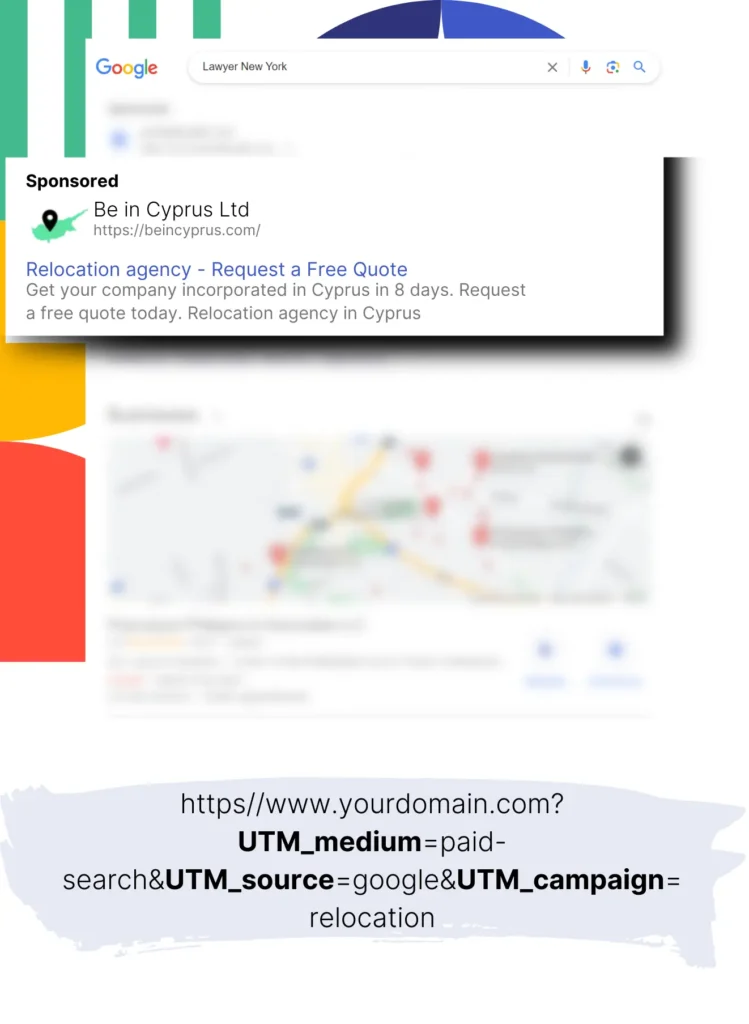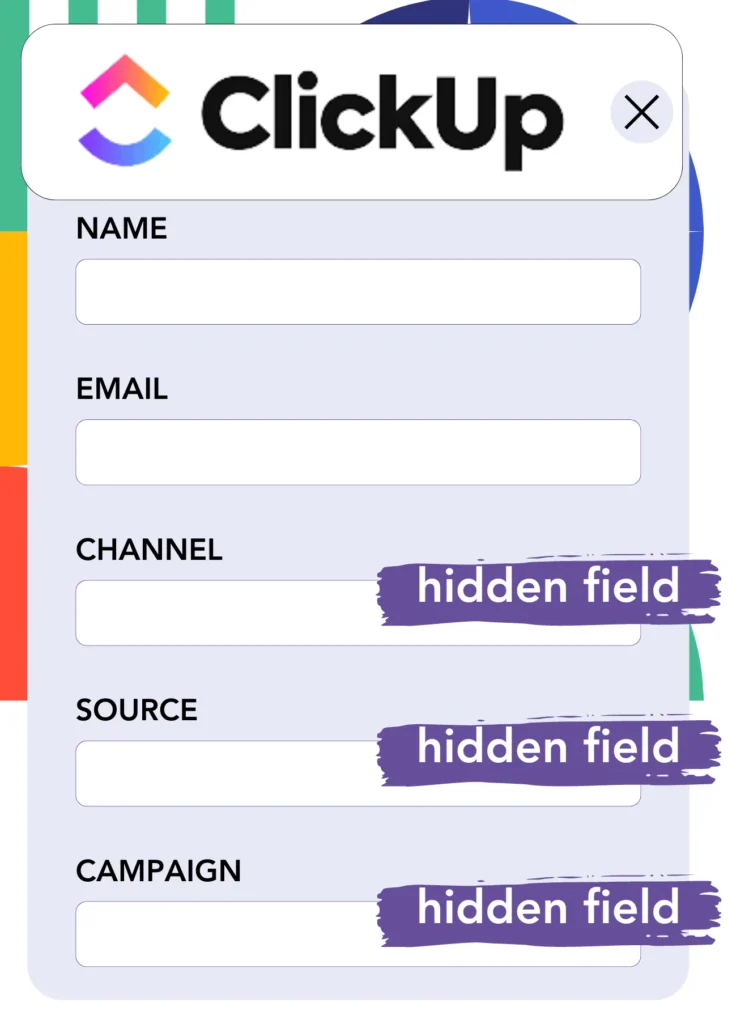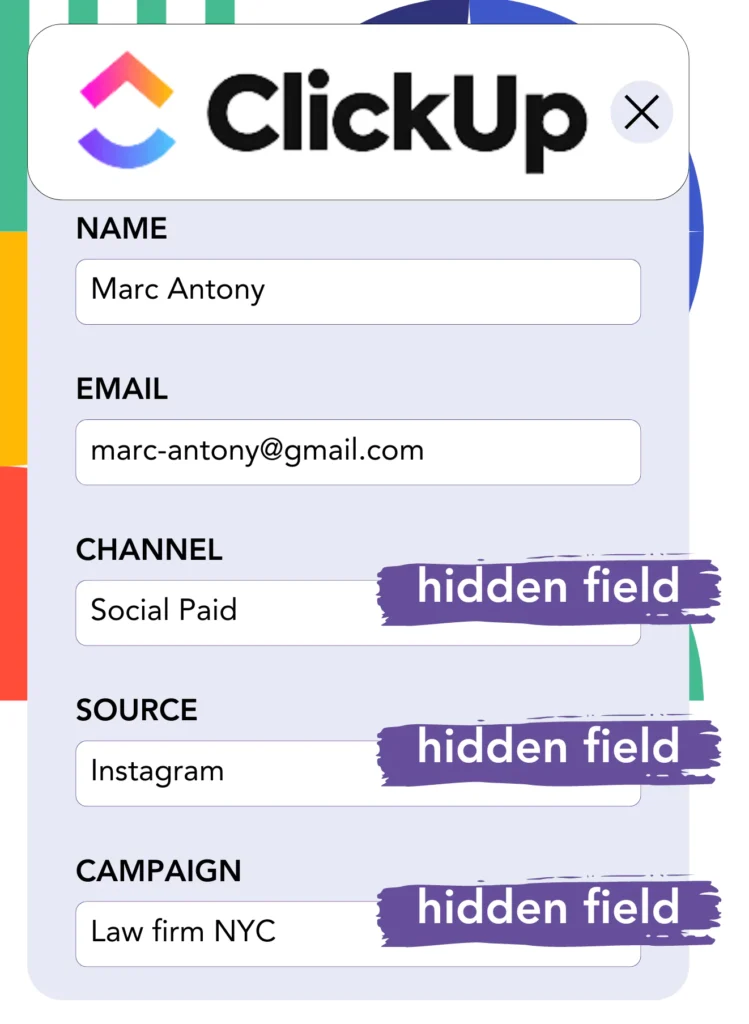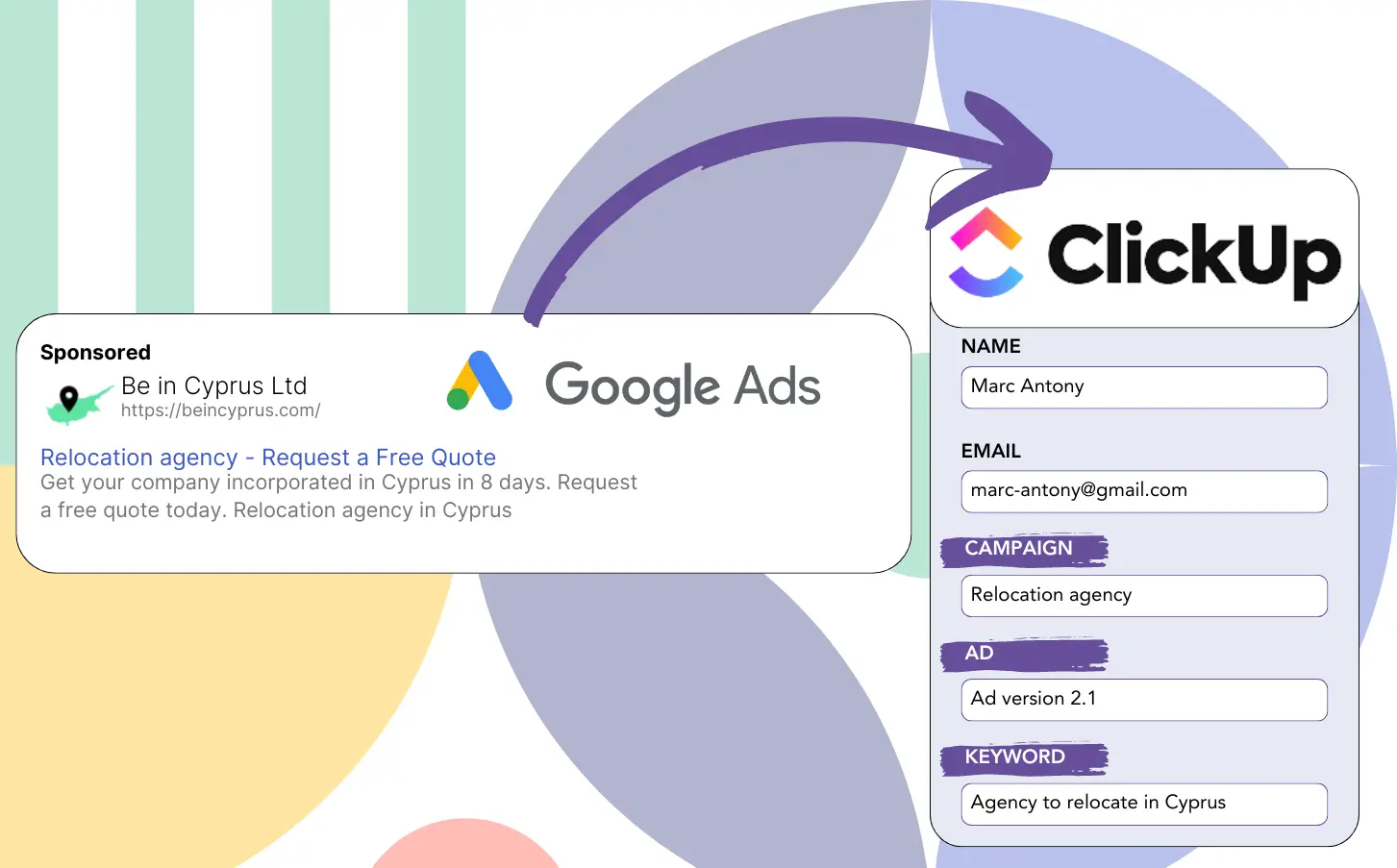Are you unsure of which Google Ads campaigns are contributing to your lead generation?
The challenge is well-documented: Google Ads indicates the number of leads from various campaigns, ads, or keywords but does not offer data at the individual lead level.
This means you cannot identify which campaign, ad, or keyword generated the leads that ultimately converted into customers.
Leadsources handles this problem effectively.
Using Leadsources, you can finally analyze Google Ads data(campaign, ad, keyword, etc.) at the lead level.
With ClickUp, you can capture Google Ads details(campaign, ad, keyword, etc.) for every lead.
You can analyze reports like “Most effective keywords for leads” to make informed choices about promoting or eliminating keywords.
Let’s dive in!
Capture Google Ads lead data in ClickUp in 4 steps
Step 1: Add Leadsources in the head tag of your website

Sign up to Leadsources.io, and benefit from our 14-day free trial.
Position the Leadsources code within your website’s head tag. No coding knowledge is needed.
Simply follow this easy step-by-step guide.
Step 2: Add the UTM parameters to your Google Ads campaigns

Apply the UTM parameters you wish to track across all your Google Ads campaigns.
Consider these examples of UTM parameters for your ad:
- UTM_source
- UTM_campaign
- UTM_term
- UTM_content
Beyond UTM parameters, Leadsources also tracks the channel, landing page, and landing page subfolder, providing a full lead-level analysis.
Step 3: Add the hidden fields in ClickUp

When users complete your ClickUp (name, email, etc.), Leadsources automatically inputs Google Ads data (campaign, ad, keyword, landing page, etc.) into the hidden fields.
Refer to the step-by-step instructions to include hidden fields in ClickUp.
Leadsources will directly input the Google Ads data into your ClickUp.
Step 4: Capture the Google Ads data in ClickUp

Leadsources gathers the Google Ads data (campaign, ad, keyword, landing page, etc.) when a visitor clicks on your ad and visits your page.
Google Ads data is automatically entered into the hidden fields of your ClickUp by Leadsources.
After a form is submitted, the Google Ads data, along with the responses, is forwarded to the ClickUp submissions page.
How does Leadsources work?
Once you add the Leadsources code to the head tag of your site, it will automatically capture Google Ads data (UTM parameters and referrer) when visitors arrive.
The Google Ads information is stored in the hidden fields of your ClickUp.
When visitors access your site without UTM parameters, Leadsources will collect data through the referrer:
- Channel
- Source
- Campaign
- Landing page
- Landing page subfolder
Using this method, you can still capture essential lead source data even if UTM parameters are not present, such as:
- On Google Search
- On your Instagram bio link
- On your social media posts
- Etc.
Many tools only monitor lead data with UTM parameters (mainly for paid and referral traffic) – this is problematic!
Leadsources can gather lead data from all channels, even when UTM parameters are not used:
- Organic Search
- Paid Search
- Organic Social
- Paid Social
- Referral
- Affiliate
- Display Advertising
- Direct Traffic
This allows for the tracking and merging of all lead source data in a single place.
How to run performance reports
Having your Google Ads data in ClickUp allows you to create performance reports such as:
- Leads per campaign
- Leads per ad
- Leads per keyword
- Etc.
This supports you in making better decisions about your Google Ads investment.
Let’s explore the range of reports you can create.
Lead performance reports
You can produce reports illustrating the number of leads created by:
- Channel
- Campaign
- Ad
- Keyword
- Landing page
- Landing page subfolder
Example #1
Export data from campaigns across different channels (SEO, PPC, email, etc.) to create a report labeled “Leads by Channel.”

Example #2
After identifying the channel that generates the most leads (e.g., Google Ads), you can narrow your analysis to that channel and review lead counts for each ad campaign.

Example #3
Once you determine the top lead-generating campaign, you can explore which specific keywords are contributing to these leads.

Sales performance report
Tracking the ads and keywords that generate the highest number of leads is useful, but do they also enhance your revenue?
Transferring your ClickUp submissions to a CRM (like GoHighLevel) enables you to generate insightful sales reports.
Example:
| Channels | Search Paid | Social Paid |
| Leads | 50 | 75 |
| Sales | 5 | 6 |
| Average order value | $150 | $100 |
| Revenue | $750 | $600 |
After executing ads on Google and Facebook, you identified that Social Paid ads yielded more leads than Search Paid ads.
Analysis over several weeks showed that Search Paid generated higher revenue with fewer leads compared to Social Paid. This information suggests increasing the budget for Search Paid campaigns.

